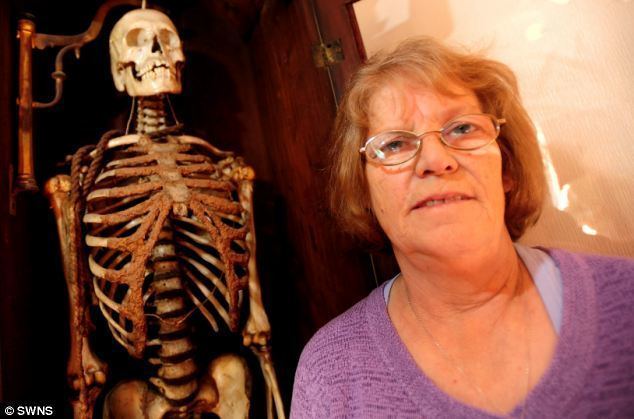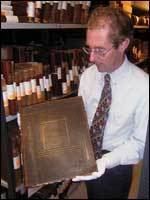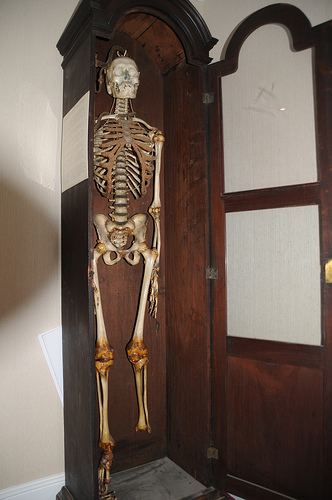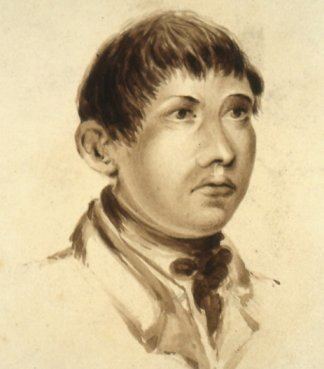Name John Horwood | ||
 | ||
Died 1821, Bristol, United Kingdom | ||
John Horwood (1803–1821) was a miner's son convicted of murder in Bristol, England, and executed in 1821. He was the first person to be hanged at Bristol New Gaol.
Contents

Life

John Horwood was born in Hanham, the third child of Thomas and Pheebee Horwood. Raised in a mining family, he refused to work in the mines after his older brother died in a shaft explosion.
Death of Eliza Balsom (Balsum/Balsam) and aftermath

Horwood's troubled relationship Eliza Balsom, an older girl with whom he had been infatuated, came to a head in 1821.

"It appears that Horwood for some time past, teased the girl with proposals, which she had uniformly and indignantly refused: and having lattlerly endeavoured to intimidate her with his threats, she became alarmed at his conduct, and took every means of avoiding him.”
This newspaper report included in The Horwood Book goes on to document multiple attacks on Ms Balsom by Horwood through 1820 and 1821 including throwing oil of vitriol (sulphuric acid) at her.
It was suggested by the prosecution at the time that John Horwood was associated with the "Cock Road Gang", notorious for being violent troublemakers.
On 25 January 1821, he saw Eliza Balsom with another boy and threw a stone which struck her on the temple. The stone caused only minor injury, but she was treated at the Bristol Royal Infirmary for a depressed fracture and a theory put forward by Horwood's antecedent in a Daily Mail interview gives Dr Richard Smith's operation as the cause of a fatal abscess. She died four days later on 17 February 1821.
According to the diary of medical cases kept by Dr Edward Estlin (ref. 35893/32/a) (online catalogue) held at Bristol Archives, Eliza Balsom's wound was greatly infected five days after the attack and Dr Richard Smith needed to clear the infection from inside the skull so undertook a trepanning procedure to cut away the bone. Smith discovered an abscess under the surface of the skull which caused the death of Eliza Balsom.
Dr. Smith gave Horwood's name to the police, so police officers, sheriff's yeomen and members of the public went to Hanham to detain him.
“The villain guessed their errand, and tried to jump out from a bedroom window in his shirt… he seized a quarryman’s hammer, and placing himself on the top of the stairs, threatened, with horrid oaths, the destruction of all who approached… The villain made a great many blows with his hammer… The Officers closed upon him, knocked him down and after a desperate conflict, at last handcuffed him and dragged him to the carriage.
The trial took place at the Star Inn in Bedminster on 11 April 1821, with Smith testifying against him. The prosecution included a phrenological report undertaken by Mary Anne Schimmelpenninck to attempt to prove Horwood's guilt by the shape of his skull. This claimed that his chief mental characteristics were 'combativeness', 'self-esteem', and 'hope', however the 'bump of murder' which was supposedly a cranial characteristic of all murderers was not present. The strongest point in Horwood’s defence was that the abscess on the brain might have been caused by the unclean dressings on the wound, and not directly by the stone attack though it would appear that this evidence was never put forward.
He was hanged two days later on temporary gallows erected above the New Gaol's gatehouse and his body was handed back to Smith for dissection in a public lecture at Bristol Royal Infirmary. The crowds gathered to watch the public hanging were so large that posters were put up warning people from being crowded over the bank of the New Cut and drowned.
The Horwood Book
Horwood's friends attempted to rescue the body on its route to Bristol Royal Infirmary for 'anatomisation' (dissection) and spirit it away on the river back to Hanham. Dr Richard Smith second-guessed their plan and took the body by taxi during the night.
As part of the process of 'anatomisation' Horwood's skin had to be removed. In other cases the skin would have been incinerated as medical waste, but Dr Smith being an antiquarian chose to tan the skin, and use it to bind the papers documenting the murder, trial, execution and subsequent dissection. Horwood's remains were retained for medical dissection. The cost of the binding was £1.10 shillings, which is worth approximately £130 in the 21st century. This book is held in the collections of Bristol Archives (Ref. 35893/36/v_i) (online catalogue) and is currently on display at M Shed museum in Bristol, alongside a contemporary dissection table, donated by Dr Richard Smith junior, which was latterly used a sideboard in a home. The skin on the front cover is embossed with a gallows motif and skulls and crossbones, with the Latin words Cutis Vera Johannis Horwood which translates to 'The True Skin of John Horwood'. The practice of anthropodermic bibliopegy is known to have been practised since the 17th century, and it was common to use a murderer's skin in this manner during the 18th and 19th centuries.
Smith kept the skeleton at his home until his death, when it was passed to the Bristol Royal Infirmary and later to Bristol University. The skeleton was kept hanging in a cupboard at Bristol University with the noose still around its neck.
21st century funeral
Horwood's skeleton was eventually buried alongside his father on 13 April 2011 at 1.30 pm at Christchurch, Hanham, exactly 190 years to the hour after he was hanged. The funeral was arranged by Mary Halliwell, the great-great-great-granddaughter of Horwood's brother. The coffin was draped in velvet and carried on a wheeled bier in the manner of elegant funerals of the period of his death.
